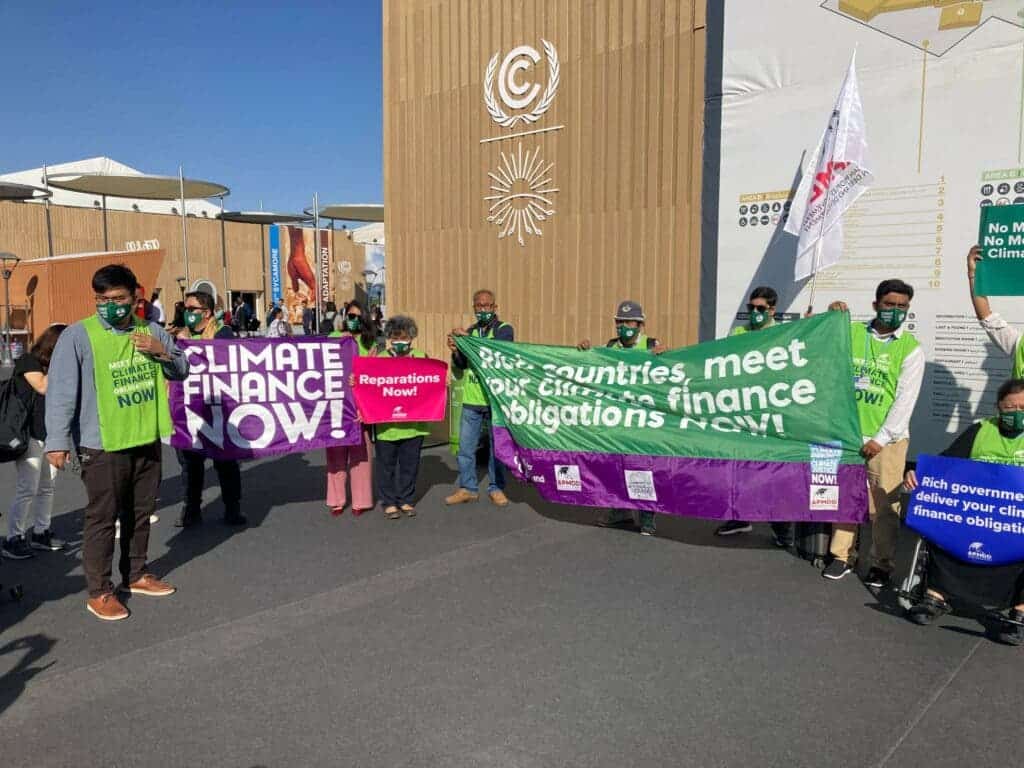The world has almost used all its remaining carbon budget. In less than a decade, it will be over — unless we do much more to reduce greenhouse gas emissions by then, the world is heading causing the world to pass a critical warming threshold, a new study shows. If this threshold is reached, it will trigger severe climate impacts around the world, from flooding and drought to hurricanes and typhoons. Can we still act in time?

When the pandemic hit, humanity recoiled and halted many of its activities as part of public health measures, which led to a decrease in our greenhouse gas emissions. As the world sought to recover after this, there were hopes that the post-pandemic reconstruction will be focused on sustainability and climate action.
But this wasn’t nearly enough.
This year has been devastating. When Russia invaded Ukraine, it sent Europe (and consequently, the world) into a frenzy for new sources of gas. New gas projects were launched as a response, and these projects will consume about 10% of the remaining carbon budget, the study showed. This would make it almost impossible for the world to meet the Paris Agreement target of limiting global warming to 1.5 degrees Celsius above preindustrial levels, the new data shows.
Running out of budget
The Global Carbon Budget, an annual review of how much emissions the world can afford to release to stay within its global warming targets, found that emissions will reach a record high this year, with most of it coming from fossil fuels. Emissions rose in the US and India compared to 2021, while China and the EU reported small declines.
Think of it this way: there are specific climate tipping points or thresholds; if we reach those, there will be irreversible damage and even if we reduce our emissions immediately, there’s no turning back to the way things were. The amount of greenhouse gas emissions we can emit without reaching such a point is called our “budget” — when we spend our budget, we run into debt, or in this case, a new and devastating climate state.
Another, more technical way of looking the carbon budget is “the maximum amount of cumulative net global anthropogenic carbon dioxide (CO 2) emissions that would result in limiting global warming to a given level with a given probability, taking into account the effect of other anthropogenic climate forcers”. But no matter how you look at it, our budget is running out.
The report, presented at the COP27 climate summit in Egypt, found humanity can’t release more than 380 billion tons of carbon dioxide equivalent over the coming decades to have a chance of meeting the 1.5 degrees target — often regarded as a key tipping point.
At our current rate, this is about nine years of current emissions, meaning the window of opportunity to meet 1.5 is now closing fast.
“By levelling emissions in recent years, we have slowed the acceleration, but we are still warming at record speeds. Now we have taken our foot off the accelerator, we need to apply the brake,” Oxford University researcher Steve Smith said in a statement. “Only by ending all CO2 emissions or balancing emissions with removals will we come to a stop.”
What we can do
To meet the 1.5 degrees target, the world will have to reduce emissions by 1.4 billion tons per year, which is equal to how much emissions were reduced in 2020 during the pandemic. Obviously, this won’t be an easy task by any measure. But it gets even worse: some leaders at the UN climate summit have been advocating for natural gas as a “transition fuel” to ease the switch from fossil energy to renewables, which couldn’t be further from the truth.
Despite the obvious issues brought by natural gas, African and Latin American countries have pledged to expand export capacity and supply more fossil fuels to Europe amid the Ukraine war. Representatives from Egypt, the host of the conference, and from the United Arab Emirates, the host of next year’s climate summit, have clearly spoken in favor of natural gas.
United Arab Emirates president Sheikh Mohamed bin Zayed al-Nahyan said UAE will continue providing oil and gas “for as long as the world is in need.” Greek Prime Minister Kyriakos Mitsotakis also asked for a brief increase in fossil fuel production, while Tanzanian energy minister January Makamba announced a new liquified natural gas project.
This leaves us in a very precarious situation, where not only are we not doing enough to avoid catastrophic climate heating, but we’re even asking for more trouble.
However, there are some small silver linings. The Pacific island state of Tuvalu joined Vanuatu in asking for a fossil fuel non-the proliferation treaty, while Kenyan president William Ruto said his country wouldn’t develop its existing hydrocarbon deposits. Norway’s state-owned energy company also said it will stop plans for an Arctic oil field.
Also, countries took a significant step at last year’s climate conference in Glasgow when they agreed to phase down coal and fossil fuels – the first time such an explicit reference was included in a COP decision text. Also, on the sidelines of that conference, over 20 countries pledged to stop public investments in overseas fossil fuel projects.
“To have any chance of staying below the international agreed 1.5˚C global warming target we need to have large annual cuts in emissions – which there is no sign of,” Mark Maslin, University College London researcher, said in a statement. “The world needs to have significant cuts in global emissions in 2023 if we are to have any chance to keeping climate change to 1.5˚C.”
At the end of the day, gas simply won’t cut it, but we’re also seeing how difficult it is for the world to adapt without it. If we truly want to avoid a climate disaster, we have to make foundational societal changes; but these changes are nowhere to be seen at the moment.


